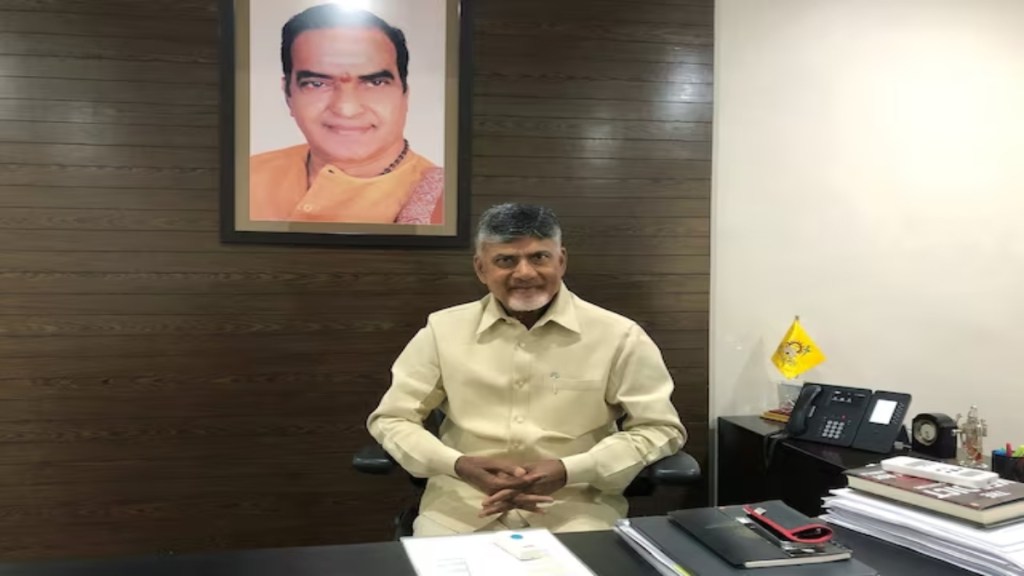N Chandrababu Naidu was once hailed as the chief minister with an IT touch. As CM of Andhra Pradesh between 1995 and 2004, Naidu was hailed as a leader who understood technology, promoted it, and was himself its devoted user — this, during an age when most political leaders were Luddites. He made Andhra one of the tech hubs of the country and was fêted by global investors as well as India Inc. as the man of the moment and also the future.
Come 2004, Naidu lost the state assembly polls. The common explanation for his defeat was that he was too IT- and urban-centric, ignored rural distress, had no connection with the agrarian masses, and was just a poster boy for the World Economic Forum variety.
Naidu once again won the assembly polls in 2014 and became the CM — by then Andhra Pradesh was bifurcated into two states. He remained the state’s CM till 2019 but during this reign, was not remembered or hailed as the tech world’s poster boy. He has once again won the polls and is set to take over as chief minister. His support to the National Democratic Alliance (NDA) government at the Centre is crucial; but what is much talked about is the special assistance he may extract from the Centre for his state, and not his tech prowess.
The purpose of charting Naidu’s political journey is to illustrate the inherent tension between liberty and equality in societies and how this has, once again, shaped the electoral outcome in the recently-concluded parliamentary polls.
Simply put, the concept of liberty in political theory is to lay stress on individual freedom, where the individual is free to pursue his or her choices and build a career or an enterprise of one’s liking. The role of the state should be limited to providing the enabling condition for individuals to pursue their path to progress.
Equality, on the other hand, stresses the higher role of the state, which has to ensure allocation and resources equitably across all sections of the society — weak and strong — and ensure that there’s equitable development.
On the face of it, the two seem to be complementary. For the progress of any society, obviously, the common refrain will be that liberty and equality should be equally present. However, theory does not translate in a linear manner in the real world, and history shows that there’s inherent tension between the two.
Seen from the economic prism, liberty promotes individual initiative and enterprise leading to individual growth, which, in turn, leads to a nation’s growth. The inventor of the wheel did not have societal good in mind, it was done for personal achievement. Equality, contrarily, is collective in nature and discounts individualism. The long history of the Cold War aptly shows this. The US, which is seen as the fountain of free enterprise, promoted liberty and saw huge strides in innovation and individual growth. However, in the process, an unequal society was created, leading to several problems there today.
Contrastingly, the USSR, which was the centre of communism, was all about equality. The state owned the factors of production and allocated them on the Marxist principle of “from each according to his ability, to each according to his needs”, which killed innovation and private enterprise.
This had its own fault lines, which led to the fall of the Berlin Wall in 1989 and that of the USSR in 1991. Thus, it was viewed that liberty had triumphed over equality, only to be proven wrong in successive decades.
In the Indian context, by adopting the socialist pattern of society post-Independence, the stress was on equality. Though liberty was not curtailed, the balance tilted towards the former. Thus, economic enterprise suffered. That changed in 1991. The stress on liberty thereafter is what’s termed as liberalisation in economic parlance.
The period since 1991 in India has been a see-saw battle between liberty and equality, which has fashioned electoral results. The outcome of the recent parliamentary elections is no different.
It won’t be wrong to conclude that in the last five years, the balance has tilted towards liberty, at least in the public perception. The reduction of corporate tax in 2019 with no similar tax sops for people in the lower income bracket; not acknowledging rural distress and unemployment enough; regional imbalances; and harping excessively on the growing premiumisation are some signs of it.
Within big businesses, this tension prevailed as well, with some firms seen to be getting a larger share of the cake and the freedom to scale up at the cost of others, while several struggled with regulatory battles, even needing state support. Such a view may be contested, but the public perception was certainly strong on these lines.
The battle between liberty and equality is not only raging in India, but also across developed nations in the West. The US, which championed liberal economy, is seeing ethnic strife largely because its political system has not been able to strike the right balance between the two.
The Indian electorate has sent the message in clear terms: big businesses are not bad, but the benefits of growth should flow equitably. In a democracy, political liberty determines the shape of economic liberty, and if the benefit of reforms or economic growth does not trickle down in an equitable manner, the clamour for equality rises. With Naidu returning to the government, the lesson for the NDA is clear: repeat the mistakes Naidu committed during his first reign as CM at your own peril.
